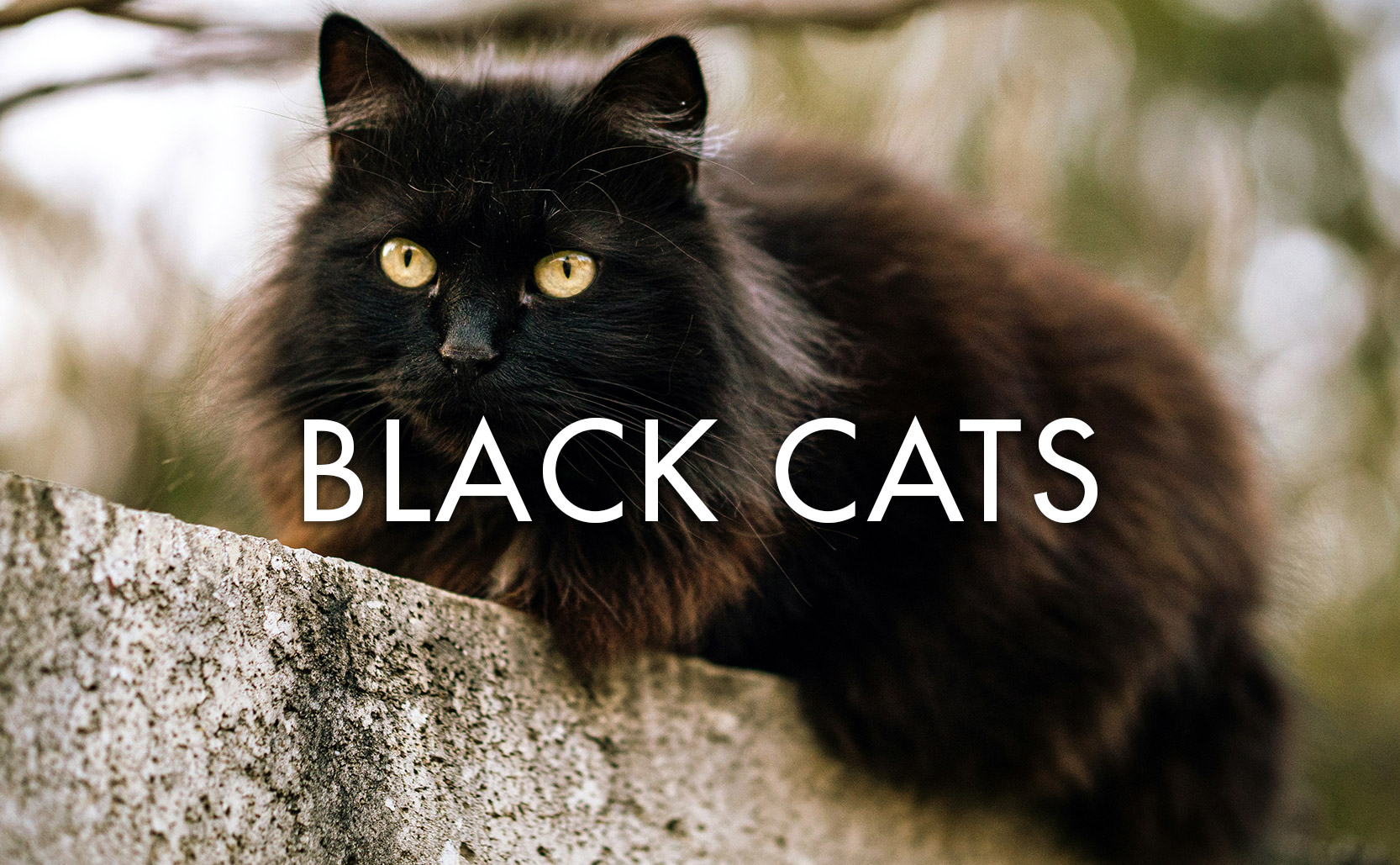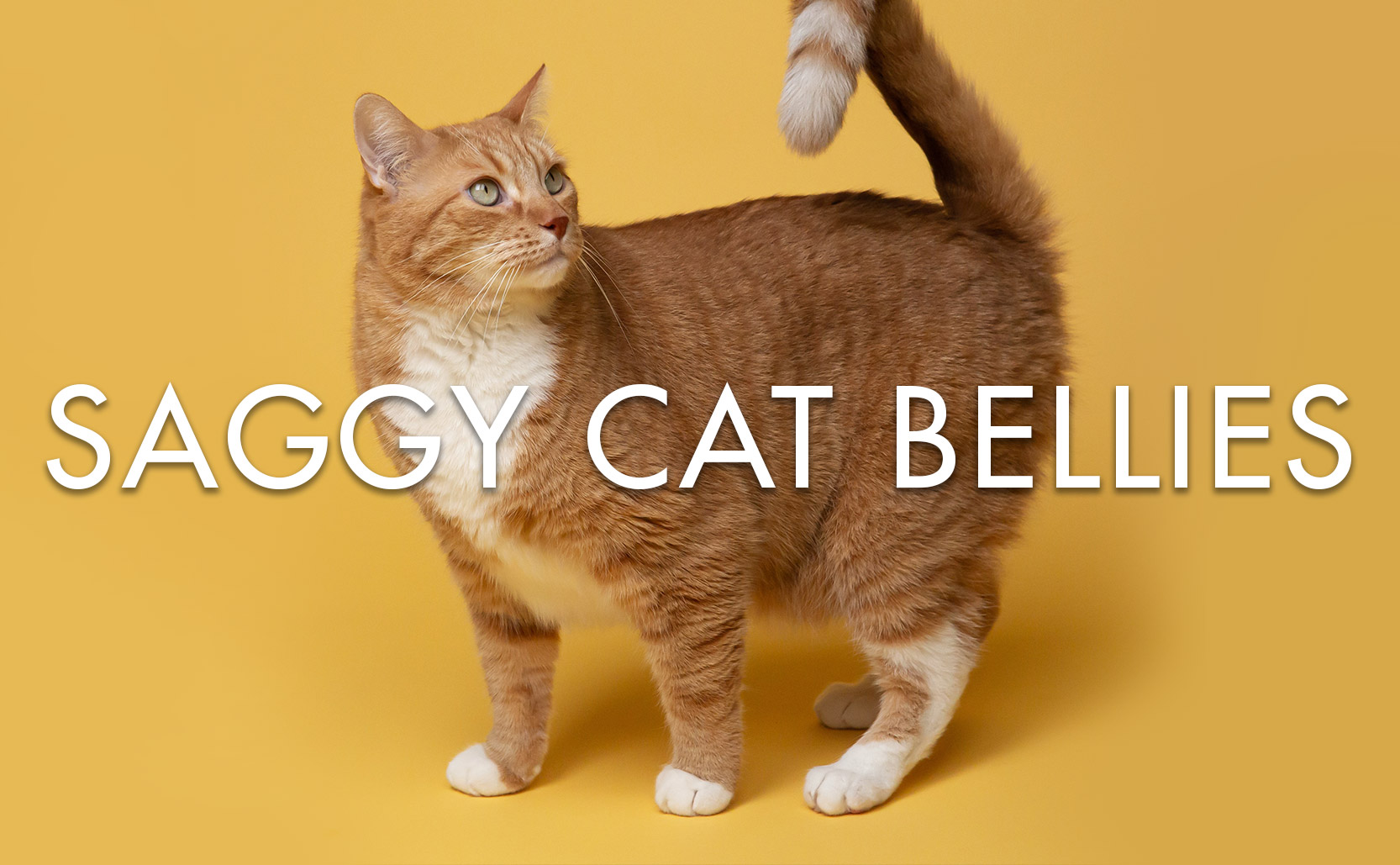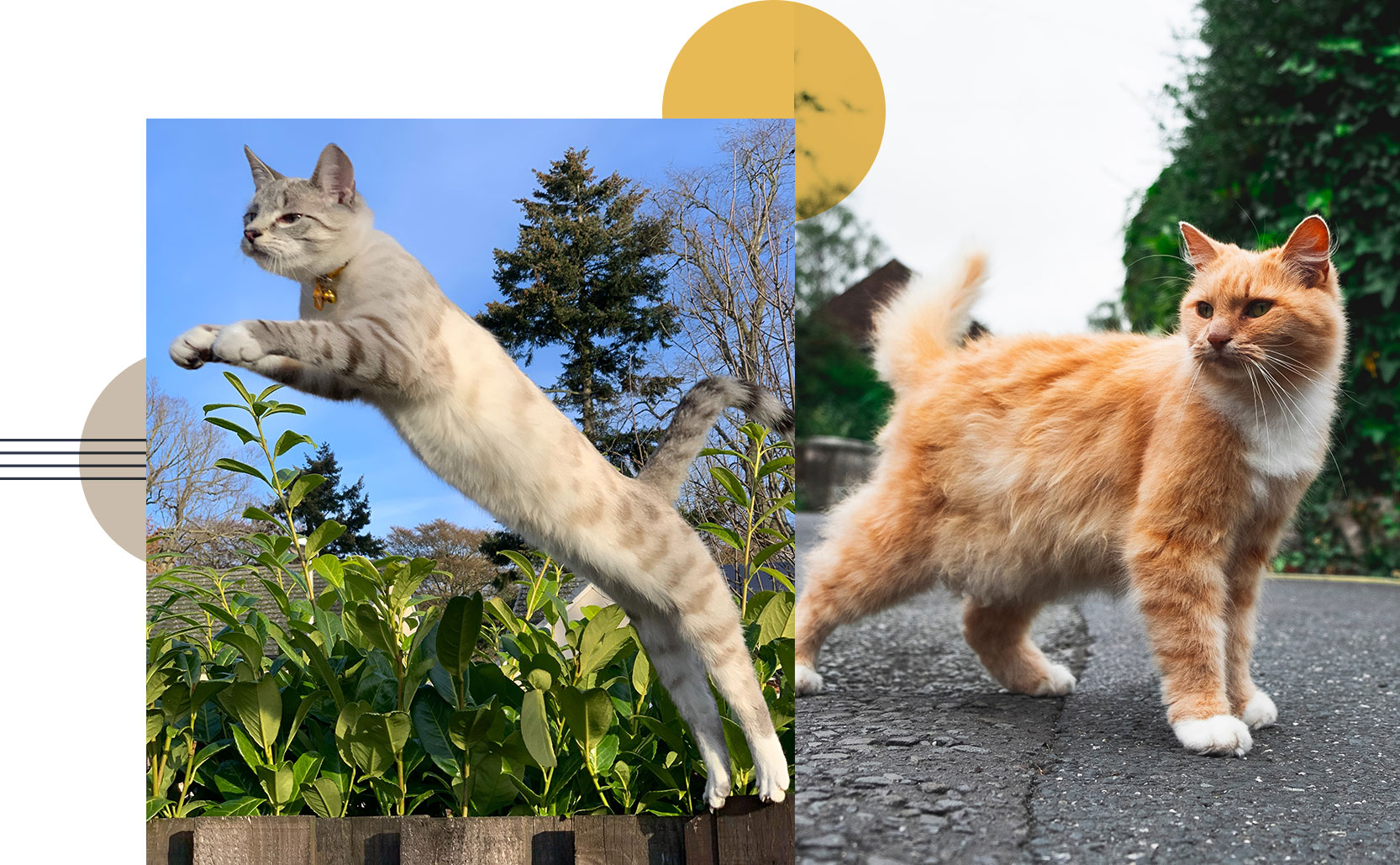Black Cats
Iconic symbols of witches & Halloween, black cats are lovable felines shrouded in superstition.
Genetics
Black cats are cats with all black fur (probably obvious). That said they aren’t a specific breed of cat and span at least 22 breeds. The Bombay is the only breed that is exclusively black as they were specifically bred in the 1950s to look like tiny panthers.
The gene for black fur is on the x chromosome and so most black cats are male (since they only have one x chromosome). Female cats need two black fur x chromosomes to be black, which makes female black cats very rare. The genetics that give black cats the darker melanin for their fur also gives most black cats yellow eyes.
Some black cats can “rust”, where their black fur turns a bit brown. Sometimes this is due to dietary problems but seems to be most commonly caused by prolonged exposure to sunlight. Given time they go back to being black.
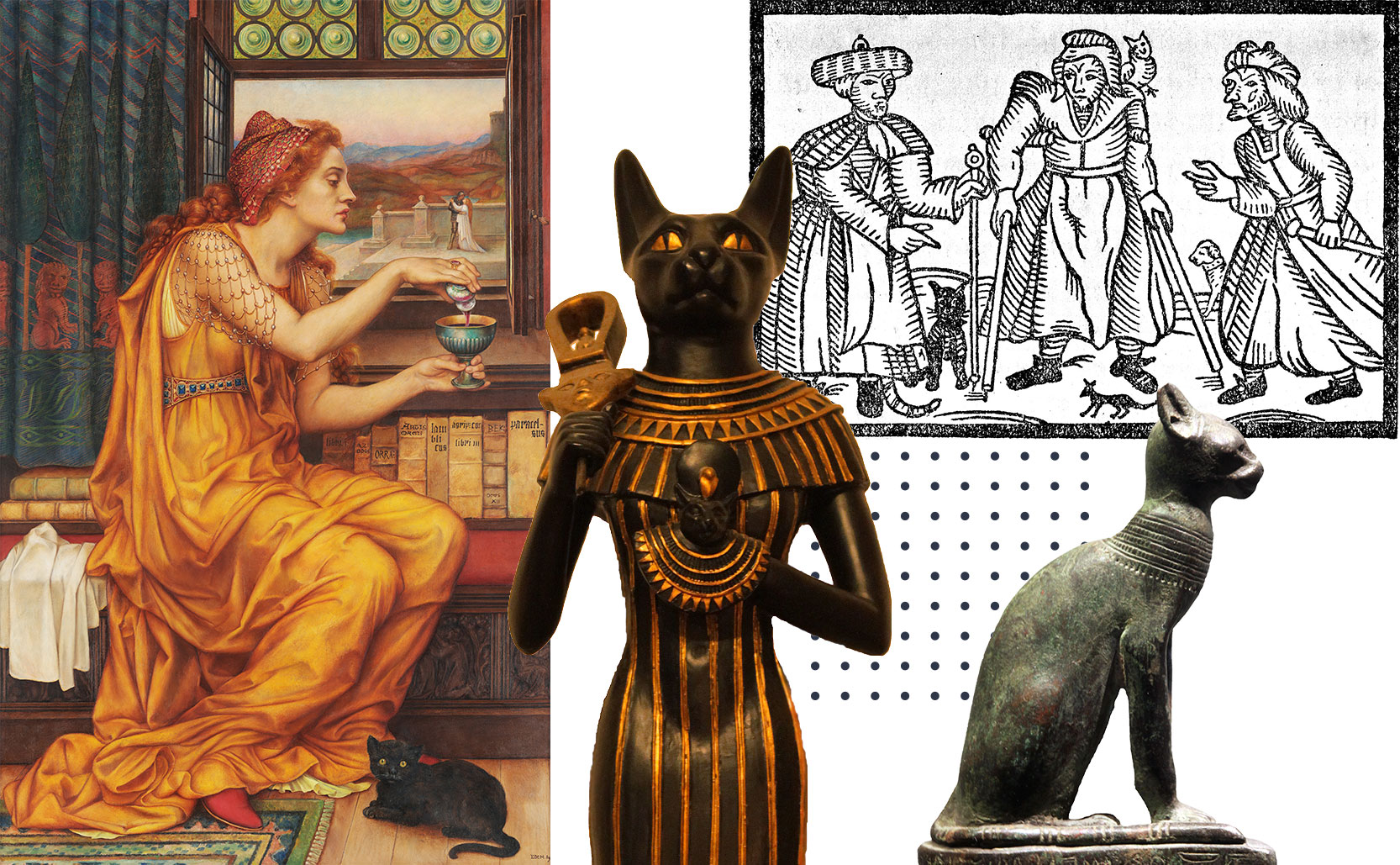
Superstitions
Besides their beautiful appearance, black cats are famous for all sorts of superstitious beliefs (both good and bad). The association of cats with magic goes back to the ancient Egyptians (in particular the goddess Bastet who had the body of a woman and the head of a black cat). The sinister reputation of black cats goes back at least as far as 13th century Germany where they were associated with evil magic. In 1233 Pope Gregory IX’s Vox in Rama condemned witchcraft, the occult, and Luciferianism which was said to be rampant in Germany.
As the church sought out heretics they formed connections (real or imagined) between black cats and demonic witchcraft. It was said the devil would appear as a black cat or a hybrid of part cat part man. By 1486 Pope Innocent VII said that “the cat was the devil’s favorite animal and idol of all witches.”
Over the centuries black cats continued to be associated with witches. Black cats played a part in the Salem Witch Trials where again they were signs that witchcraft was taking place (sometimes a cat was even thought to be a witch in disguise). Today a black cat crossing your path is generally considered bad luck but in Germany the direction the cat is crossing can bring either good or bad luck (with right to left being bad luck).
That said it isn’t all bad for black cats. British & Irish sailors believed that black cats as ship’s cats would bring good luck and ensure a safe return to harbor. In Scotland a black cat on your doorstep means money is coming your way. Black cats in Japan are believed to bring good fortune and possibly help single women find love. Pop culture witches are frequently accompanied by black cats. In the 1989 Studio Ghibli movie Kiki’s Delivery Service the little witch Kiki is accompanied by a helpful black cat named Jiji. Sabrina the Teenage Witch has a cat named Salem Saberhagen who had been a warlock but was subsequently transformed into a talking black cat.
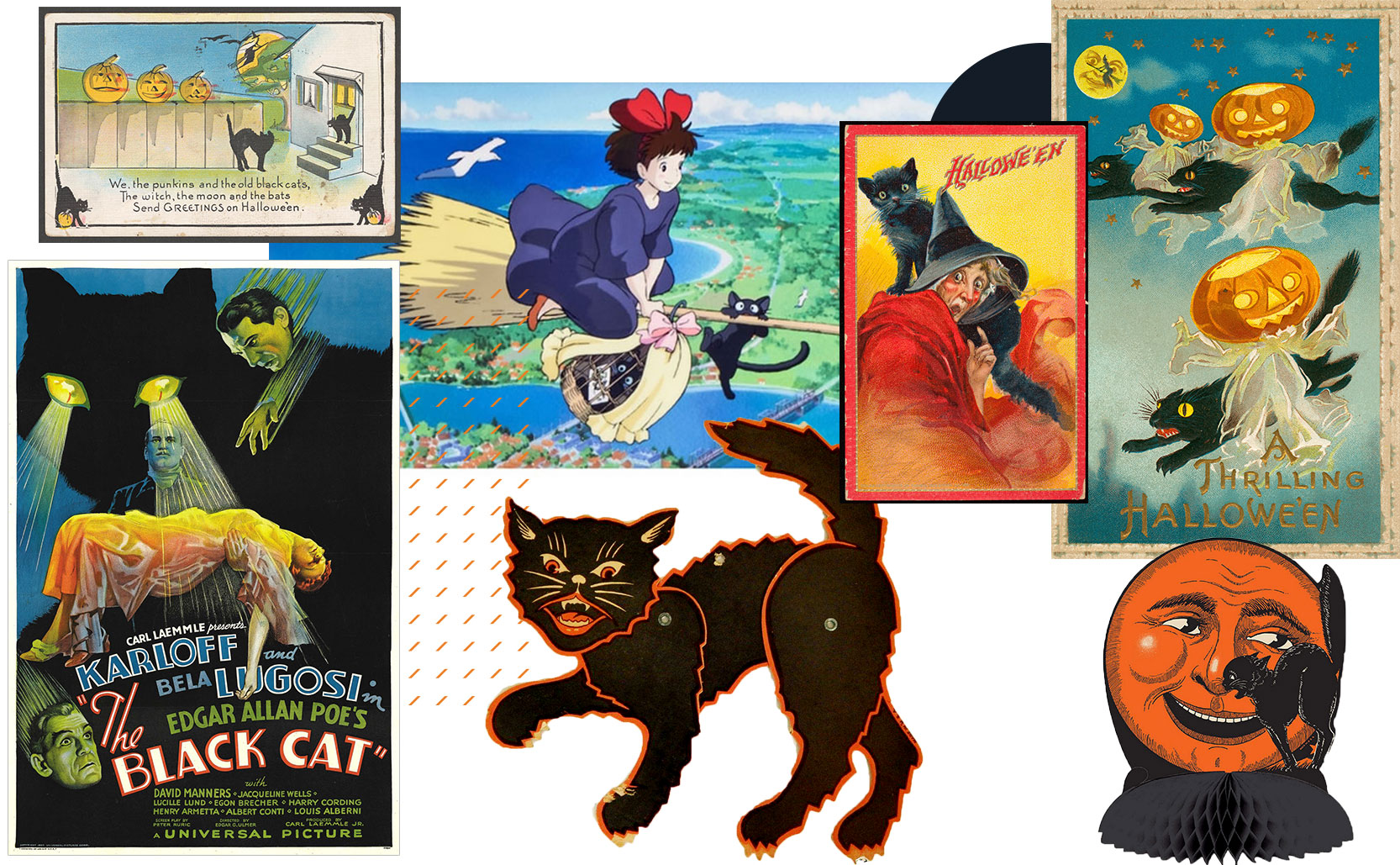
Adoption & Halloween
Centuries of superstitions have made black cats both an iconic witchy part of Halloween as well as a bit of a pariah. Despite being innocent lovable feline friends, not enough black cats are adopted and as a result they are the most euthanized cat color in shelters. It should be noted though that black cats (fully black as well as mostly black) are also the most prevalent color of cat. So while black cats are the most euthanatized by total number there are also more black cats overall and the euthanasia rate seems to be similar to other cat colors (with white cats being the least euthanized).
There is an urban legend that black cats are used in dark rituals around Halloween but there has never been any evidence of this. Still, some shelters restrict black cat adoptions as Halloween approaches. For the shelters who do not restrict black cat adoptions there does not seem to be any increased adoption rate for black cats around Halloween. If you are looking to adopt a black cat some shelters have Black Friday adoption events where the adoption fees are waived for black cats.
Added info: Black cats found another way into classic Americana kitsch, the Kit-Cat Klock. Created in Portland, Oregon in 1932 the Kit-Cat Klock is a black & white cat clock whose eyes and tale move side-to-side in time. The clock is still produced and the design is largely unchanged from the original. The classic black & white model is around $60. Their manufacturer California Clock estimates that they have sold one clock every three minutes for the last 50 years.


